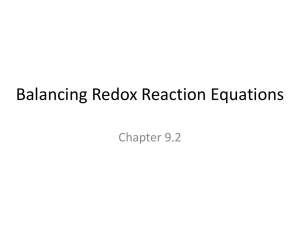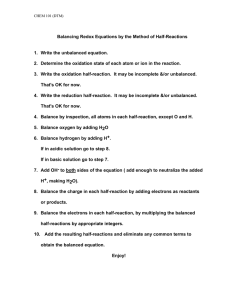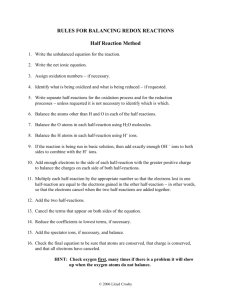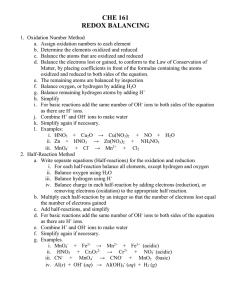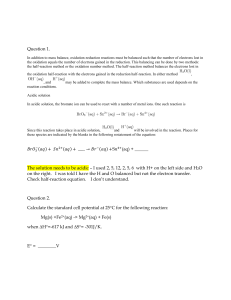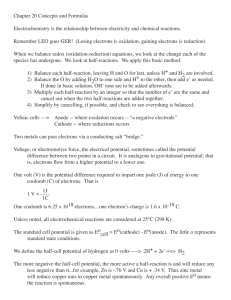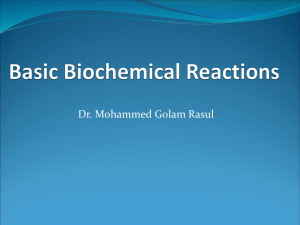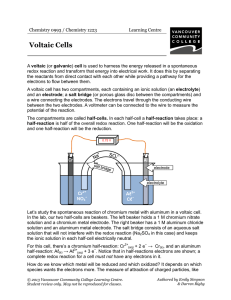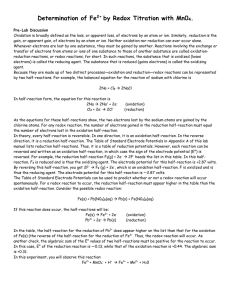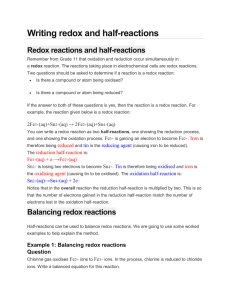chemistry terminology for a redox reaction between compound X and compound... X is oxidized Y is reduced
advertisement
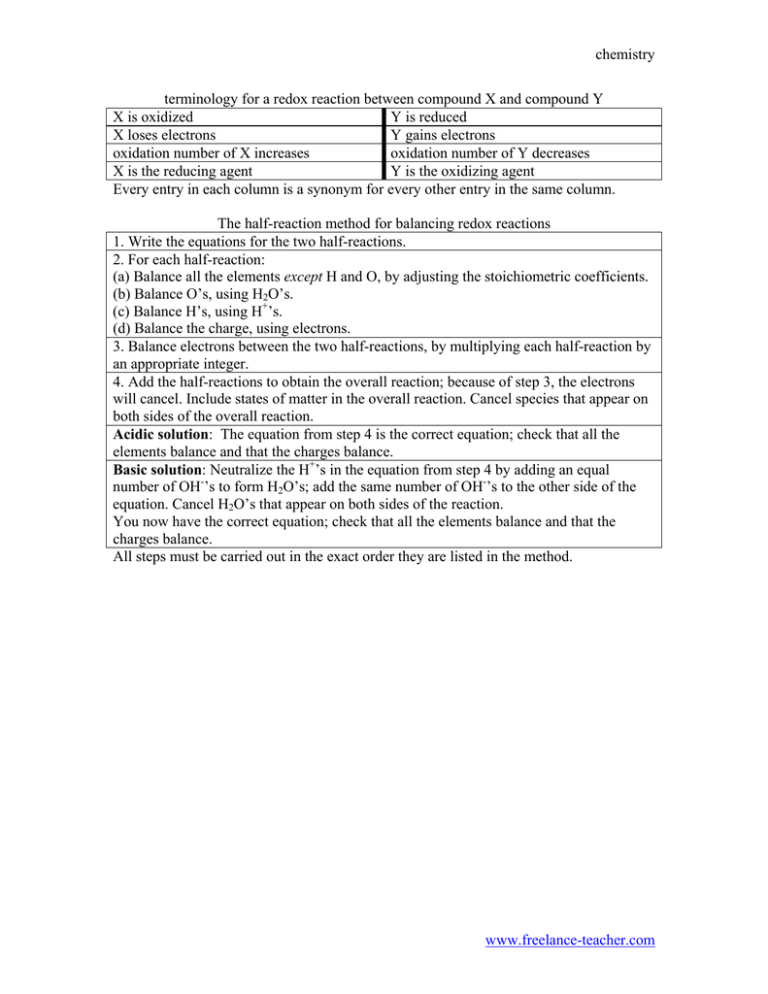
chemistry terminology for a redox reaction between compound X and compound Y X is oxidized Y is reduced X loses electrons Y gains electrons oxidation number of X increases oxidation number of Y decreases X is the reducing agent Y is the oxidizing agent Every entry in each column is a synonym for every other entry in the same column. The half-reaction method for balancing redox reactions 1. Write the equations for the two half-reactions. 2. For each half-reaction: (a) Balance all the elements except H and O, by adjusting the stoichiometric coefficients. (b) Balance O’s, using H2O’s. (c) Balance H’s, using H+’s. (d) Balance the charge, using electrons. 3. Balance electrons between the two half-reactions, by multiplying each half-reaction by an appropriate integer. 4. Add the half-reactions to obtain the overall reaction; because of step 3, the electrons will cancel. Include states of matter in the overall reaction. Cancel species that appear on both sides of the overall reaction. Acidic solution: The equation from step 4 is the correct equation; check that all the elements balance and that the charges balance. Basic solution: Neutralize the H+’s in the equation from step 4 by adding an equal number of OH-’s to form H2O’s; add the same number of OH-’s to the other side of the equation. Cancel H2O’s that appear on both sides of the reaction. You now have the correct equation; check that all the elements balance and that the charges balance. All steps must be carried out in the exact order they are listed in the method. www.freelance-teacher.com
